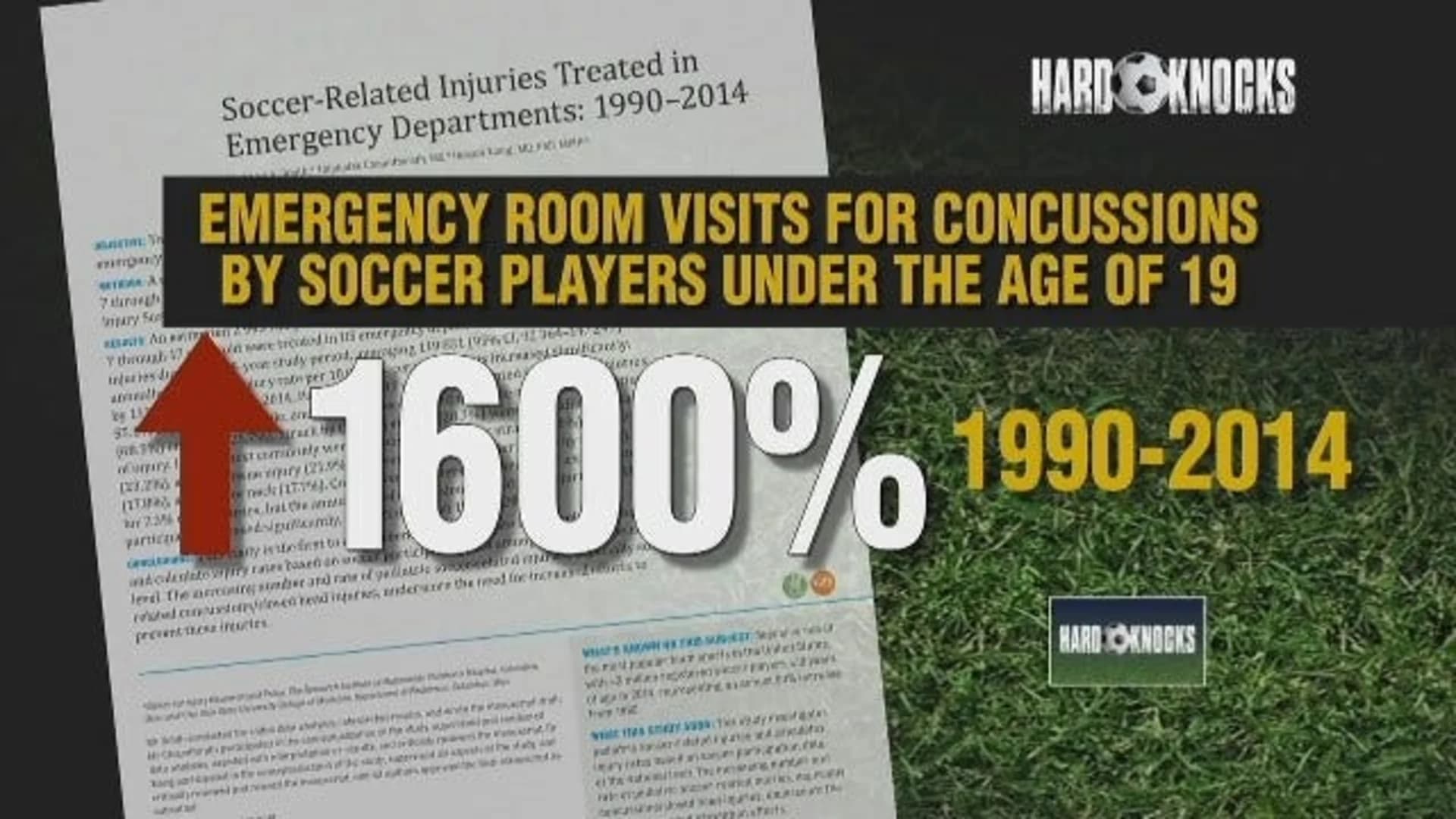
The rate of concussions sustained by girls high school soccer players on Long Island and nationwide is spiking.
According to reports filed last year by more than 100 public high schools on Long Island, girls soccer was responsible for 116 suspected concussions. That's one concussion for every 40 girls who play.
The figure is far less than concussions received in high school football, but is still almost twice as many as reported in boys soccer. The rate for boys is one concussion per every 85 players.
"It was like, the best experience of my life and I just barely remember," says Emma Baumbush, a member of last year's state champion Islip girls soccer team. She was concussed in the semifinals after being hit in the side of the head with a ball.
"That night, I just had the worst headache ever and it was hard to go to sleep," says Baumbush. "The next morning, I was sensitive to light."
The concussion trend has also been found nationwide. A study published in October by the American Academy of Pediatrics found emergency room visits for concussions by soccer players under the age of 19 rose nearly 1,600 percent from 1990 to 2014.
A report published last year in the Journal of the American Medical Association showed in the last 10 years, 51 percent of concussions were caused by player-on-player contact, compared to 29 percent from contact with a ball.
Some people with knowledge of the issue say girls may be more likely to report their concussion symptoms than boys. Others say the increase in injuries has to do with the game becoming bigger, faster and stronger.
Denise Kiernan, Nassau County's director of girls high school soccer and Glen Cove's athletic director, admits the game has become more aggressive. While coaches and referees are trained to prevent rough play, Kiernan says it can't be changed.
"I believe that's an integral part of the game," says Kiernan.
James Pierre-Glaude, Stony Brook University's clinical coordinator for its athletic program, says teenage girls may also be more prone to concussions due to differences in muscle makeup in the neck.
Experts believe female concussions can be reduced through drastic rule changes. Some of these would include requiring players to wear head gear or rigid rule enforcement against physical play.
More from News 12
2:17

STORM WATCH: Snow tonight through Sunday morning on Long Island
0:24

Illegal gambling arrest made during SLA inspection at Huntington bar
0:31

4 accused of burglarizing smoke shops in Oceanside and Rockville Centre
0:45

Off-duty Nassau County officer arrested for DWI in wrong-way crash with garbage truck that injured 3
1:54

Central Islip teen arrested, accused of stealing car with 3-year-old inside in Brentwood
2:41
